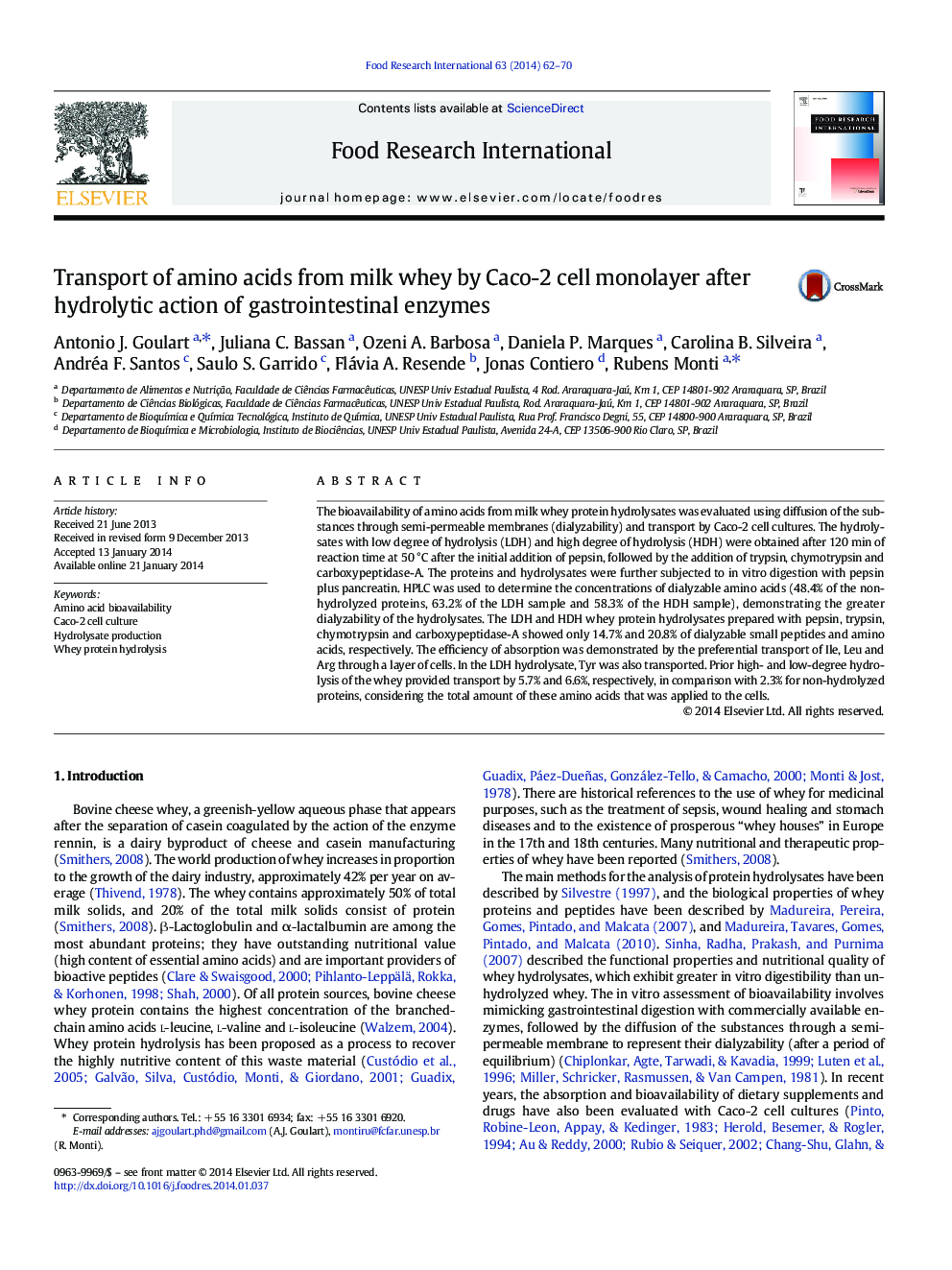| Article ID | Journal | Published Year | Pages | File Type |
|---|---|---|---|---|
| 6395716 | Food Research International | 2014 | 9 Pages |
â¢Leu, Tyr, Ile and Arg were transported first through a Caco-2 cell monolayer.â¢Milk whey protein hydrolysates produced with different combinations of proteasesâ¢Amino acid bioavailability is enhanced with prior enzymatic hydrolysis.
The bioavailability of amino acids from milk whey protein hydrolysates was evaluated using diffusion of the substances through semi-permeable membranes (dialyzability) and transport by Caco-2 cell cultures. The hydrolysates with low degree of hydrolysis (LDH) and high degree of hydrolysis (HDH) were obtained after 120 min of reaction time at 50 °C after the initial addition of pepsin, followed by the addition of trypsin, chymotrypsin and carboxypeptidase-A. The proteins and hydrolysates were further subjected to in vitro digestion with pepsin plus pancreatin. HPLC was used to determine the concentrations of dialyzable amino acids (48.4% of the non-hydrolyzed proteins, 63.2% of the LDH sample and 58.3% of the HDH sample), demonstrating the greater dialyzability of the hydrolysates. The LDH and HDH whey protein hydrolysates prepared with pepsin, trypsin, chymotrypsin and carboxypeptidase-A showed only 14.7% and 20.8% of dialyzable small peptides and amino acids, respectively. The efficiency of absorption was demonstrated by the preferential transport of Ile, Leu and Arg through a layer of cells. In the LDH hydrolysate, Tyr was also transported. Prior high- and low-degree hydrolysis of the whey provided transport by 5.7% and 6.6%, respectively, in comparison with 2.3% for non-hydrolyzed proteins, considering the total amount of these amino acids that was applied to the cells.
